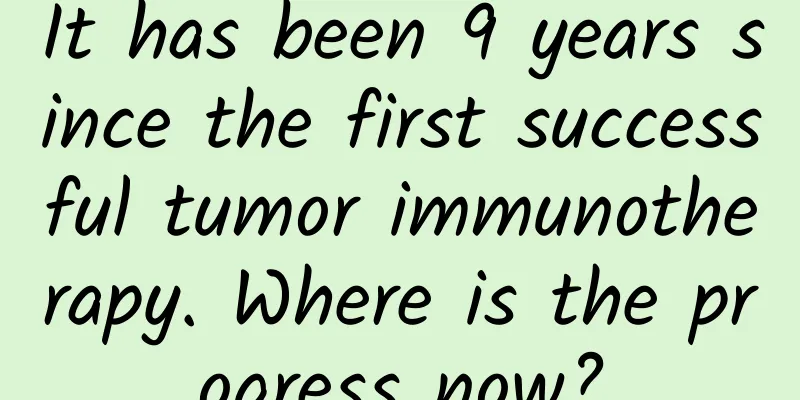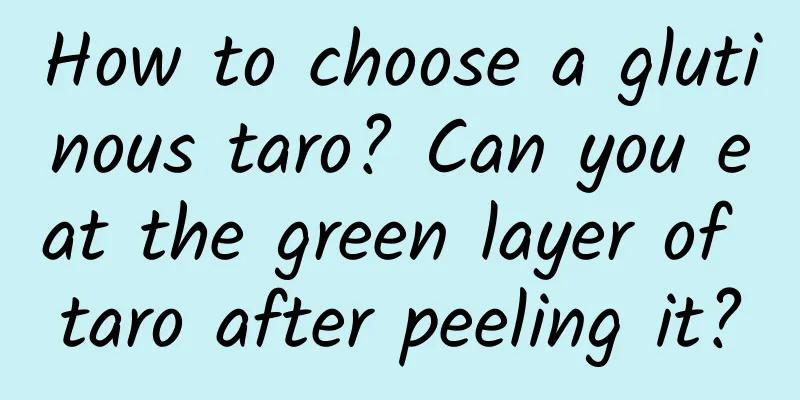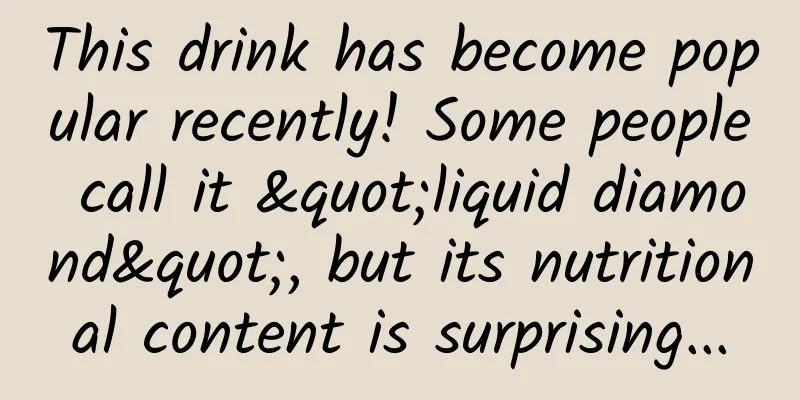It has been 9 years since the first successful tumor immunotherapy. Where is the progress now?

|
The topic of "the dark side of cancer treatment" revealed by Dr. Zhang Yu is still fermenting. During this period, many people have voiced their support for innovation in cancer treatment and believe that guidelines should not be used to suppress innovation by clinicians. Can immunotherapy really cure cancer? Once upon a time, a successful CAR-T therapy was recorded in history, brilliant and dazzling, bringing infinite hope to mankind. Researchers, clinicians, commercial capital, media and patients have been involved in the torrent of developing cancer immunotherapy and invested in the huge market of cancer treatment, which has not stopped until now. However, so far, the application of CAR-T therapy is still limited to some blood tumors, and it is extremely difficult to realize the "prospects" even halfway. This process requires the self-purification of the scientific community, and self-purification takes time. Written by | Cai Cai These two days, people are celebrating the nine-year anniversary of a little girl who once suffered from cancer (Figure 1). Figure 1 Emily is now nine years cancer-free. This little girl is called Emily Whitehead. Her name and her story of fighting cancer deserve a place in the history of oncology and cancer research textbooks. Emily Whitehead was diagnosed with B-Cell Acute Lymphoblastic Leukemia when she was five years old. This is the most common leukemia in children, with a cure rate of 85-90%. However, the condition of the other 10-15% of patients who are difficult to treat and prone to relapse is more difficult and the survival rate is very low. The B-ALL leukemia that Emily suffered from was a difficult-to-treat type. After chemotherapy and bone marrow transplantation, her leukemia relapsed and reached a stage where there was no cure. At that time, Philadelphia Hospital had just launched a clinical trial of a tumor therapy called "CAR-T", and Emily was lucky enough to become the first patient in the world to receive this experimental therapy. CAR-T therapy, short for Chimeric Antigen Receptor T-Cell Therapy, is a relatively new type of cancer immunotherapy. This therapy requires extracting T cells from the patient's own immune system, culturing and modifying them in vitro, equipping the T cells with special molecules that can specifically identify and attack cancer cells. The modified T cells are then injected back into the patient's body, where they eliminate the cancer cells through their immune response against them. Because T cells are aggressive immune cells, when they identify and judge that a certain cell is an "enemy", they will attack the opponent. What kind of scene is this probably? Figure 2 is an example of a mouse experiment [1], in which the white cancer cells are the “enemy”, while the red and green cells are two different groups of T cells: the red group of T cells can recognize the cancer cell “enemy”, while the green group cannot, and it is impossible to tell who is the “enemy”. Figure 2 So you see those red and green T cells shuttling back and forth among the clusters of cancer cells, and only the red T cells can play a killing role - when the red T cells stay on the surface of the white cancer cells and tear them apart, the white cancer cells "bad guys" are killed and release light blue death signals. In Figure 2, you can see dots of blue, which are a sign that cancer cells are dying. You can see them more closely in the circle in Figure 3. Figure 3 As for the green T cells, since they cannot recognize the "enemy", they just run around in vain. One of the keys to CAR-T therapy is to equip the patient's own T cells with molecules that can specifically identify cancer cells, like a special "enemy" detector. The modified T cells wander around the human body, and once the detector receives a specific signal from the surface of the "enemy" cancer cells, it will activate the T cells, launch an attack, and eliminate the cell "enemy" carrying the signal. Figure 4 shows a real-life video of CAR-T cells killing cancer cells in mice[2]. Figure 4 Among them, the white ones are the "enemies" of acute B-lymphocytic leukemia (B-ALL) cancer cells, and the green ones are the modified CAR-T cells that have the ability to recognize these "enemies" - these cells are the "medicines" used to treat tumors and kill cancer cells. From the enlarged part on the right side of Figure 4, we can clearly see that a green CAR-T cell lingers and tears on the white cancer cell for a while, and the white cancer cell quickly releases a blue death signal, which can be said to be "the medicine cures the disease." After the tumor-killing CAR-T cells succeed, they quickly leave the "enemy" that has been annihilated and rush to the next "enemy". (For details, see "Watching the battle of wits and courage between immune cells and cancer cells under a microscope | Touching the Elephant") CAR-T cells are very lethal, right? It is precisely because these little guards are so lethal that we must be very careful when equipping them with "enemy" identifiers, because cancer cells are transformed from good cells after all. If the identifiers are not very accurate, the T cell guards will also kill the good cells indiscriminately, killing 800 enemies and injuring 3,000 of their own, which will be troublesome... Currently, CAR-T therapy has been successful in some blood tumors and has been approved by the FDA for the treatment of childhood acute lymphoblastic leukemia and adult lymphoma. One of the key points that must be mentioned for the successful clinical application of CAR-T therapy is the first success of this therapy in the clinical trial stage that year - Dr. Carl June of Philadelphia Hospital cured the little girl Emily. Because her relapsed B-ALL met the eligibility criteria for the CAR-T therapy clinical trial, Emily became the first child to receive this treatment. Her T cells were extracted by the medical team, modified, and then infused back into her body. Everything was normal at first, but four days later, Emily started to have a low-grade fever. A day later, she developed a high fever and was sent to the ICU for close observation. She quickly developed symptoms of a sudden drop in blood pressure and pulmonary edema, and had to be put on a ventilator for mechanical ventilation[3]. Emily’s physical condition took a turn for the worse, and the medical team responsible for the CAR-T therapy was caught off guard. Through an emergency blood test, they found that there was an inflammatory factor called interleukin 6 (IL-6) in Emily’s blood. The expression level had become extremely high, up to 1,000 times the normal level. This was a very alarming and deadly inflammatory factor storm[4]. Because T cells do not produce interleukin 6, the medical team did not anticipate this sudden crisis and was completely unprepared. Emily's life was once on the line. Fortunately, there was a attending physician named Carl June. His daughter suffered from rheumatoid arthritis and needed regular injections of a drug called tocilizumab. Tocilizumab is a humanized monoclonal antibody that inhibits a series of activities caused by this inflammatory factor in cells by targeting the receptor protein (IL-6R) on the cell surface, thereby inhibiting the related immune response. It was approved by the FDA for the treatment of active rheumatoid arthritis and was later approved for polyarticular juvenile idiopathic arthritis, systemic juvenile idiopathic arthritis and other immune diseases. So Dr. Carl June happened to know that there was such a drug that could inhibit the activity of interleukin 6! Another lucky thing was that their hospital happened to have tocilizumab at the time, so it was available for Emily to use immediately (otherwise she would have to wait two more days). It is said that Emily's symptoms were relieved almost immediately, and her blood pressure and breathing gradually returned to normal - Tocilizumab saved Emily's life and also saved CAR-T therapy - Emily survived the disease, her leukemia was cured, and CAR-T therapy was a success! As Emily's story was widely reported by the media, CAR-T therapy also came into the spotlight. At that time, several pharmaceutical companies fought fiercely to get the first place, and the onlookers were very excited! Later, Novartis' Kymriah took the lead and became the first CAR-T therapy approved by the FDA in August 2017. Kite's Yescarta followed closely and was approved in October 2017. As of May 2021, Emily is 16 years old, has lived cancer-free for nine years, and has a foundation named after her that raises funds for cancer research and treatment[5]. Why does CAR-T therapy cause a potentially fatal inflammatory cytokine storm? Through studies on mice, scientists have found that this may be because CAR-T cells can directly or indirectly activate macrophages (another type of immune cell) in the body, which in turn causes the release of a large amount of inflammatory factors [6-8]. If Carl June and his team had not found tocilizumab in time and rescued Emily from the inflammatory factor storm, the CAR-T experimental therapy might have experienced many twists and turns. In August 2017, Tocilizumab was approved by the FDA for the treatment of inflammatory cytokine storm caused by CAR-T therapy. So, how does CAR-T therapy work? The CAR-T therapy at the Dana-Farber Cancer Center of Harvard Medical School is roughly as follows, for reference only[9]: 1. Evaluation: The patient undergoes a series of tests and screenings to determine whether CAR-T cell therapy is suitable for the patient. 2. Collect T cells: Collect the patient's own T cells through apheresis (drawing blood from the body, collecting T cells in the blood, and returning the remaining blood to the patient). 3. Modify T cells: Send the patient's T cells to the laboratory for genetic engineering, and equip the T cells with chimeric antigen receptors (CAR) that can specifically recognize cancer cells. 4. Expand the modified T cells: Cultivate these modified CAR-T cells in the laboratory and expand them to millions. This process may take several weeks, and then the expanded CAR-T cells will be frozen and sent to the hospital or center that is treating the patient. 5. Conditioning therapy: Patients may receive chemotherapy before receiving CAR-T cells to help the immune system make room for the CAR-T cells to be infused. 6. CAR-T cells are transfused back into the patient: This is a one-time infusion similar to a blood transfusion. The patient may then be hospitalized for a few weeks to monitor efficacy, physical condition, and side effects. 7. Recovery: The recovery period is about 2-3 months to evaluate the efficacy and side effects. It is not uncommon to need to be re-hospitalized for complications during this period. Therefore, the hospital requires patients to live within a two-hour drive from the hospital within 30 days after the infusion of CAR-T cells, and to be accompanied by a caregiver to monitor for signs of fever, infection, and neurological diseases at any time. Given the complexity of CAR-T therapy, we can guess that it must be very expensive and has very high requirements for operators and medical environment. For patients who have no medical cure, there is indeed a chance of survival through CAR-T. Someone once summarized the results of multiple CAR-T clinical trials and found that among 369 cases treated, only 79 cases relapsed. This is a very high success rate for refractory relapsed leukemia[10]. Many of the cases that relapsed after CAR-T treatment were because the cancer cells adjusted themselves and no longer expressed special "enemy" signals that could be recognized by T cells, thus escaping the fate of being eliminated and causing leukemia to return. ——Cancer cells develop resistance to CAR-T in this way, which is quite similar to the way other cancer cells develop resistance to certain targeted drugs. In a few cases, when the patient's T cells were extracted through blood draws, cultured and transformed in vitro, sporadic leukemia embryos were also mixed in (even if only one) [10] and were transformed together with the T cells, masking the "enemy" signals on the surface and not being recognized by CAR-T cells, thus escaping the attack. After continuous self-replication, the spark turned into a prairie fire. Therefore, the CAR-T manufacturing technology, which is already very strict, still needs to be continuously improved to avoid contamination from cancer cells in the modified T cells cultured in vitro and to avoid the subsequent drug resistance that may arise. Through the cases of resistance to CAR-T therapy, it can be seen that the "enemy" signal that can be recognized by T cells, which judges cancer cells as "enemies" and launches attacks, is extremely important for CAR-T therapy. The modified T cells are actually unable to analyze whether the opponent is a cancer cell or not. They can only distinguish whether there is a signal or not: if there is a signal, they will kill it; if there is no signal, they will let it go. Imagine if normal cells also carry this signal molecule, T cells will launch an indiscriminate attack until the entire army is annihilated and the fight continues, thus causing great toxic side effects. Therefore, the specificity of this signaling molecule is critical. However, since cancer cells are produced from normal cells through a complex carcinogenic process, to the human body, cancer cells are part of "ourselves" rather than an "enemy". Therefore, it is actually very difficult to find "enemy" signal molecules that only exist on the surface of cancer cells but not on the surface of normal cells. At present, the clinical success of CAR-T therapy is mostly in tumors developed from B cells, such as B-ALL, B-cell non-Hodgkin lymphoma (NHL), Diffuse large B-cell lymphoma (DLBL), and B-ALL. This is because T cells modified by existing technology can specifically recognize B cell surface antigen CD19, thereby judging all B cells in the patient's body, whether cancerous or normal, as "enemies" and eliminating them all at once. A person can still survive even if he loses normal B cells, and it is not a big problem. Without normal nerve cells, blood vessel cells, skin cells, etc., it would be quite painful. This is one of the reasons why CAR-T has been successful in some blood tumors but has not yet achieved a key breakthrough in solid tumors. Can the application of CAR-T therapy be expanded to fight solid tumors? This requires a lot of research work. In recent years, CAR-T therapy and immunotherapy have been very popular. The success of CAR-T therapy has made more and more people see the prospects of immunotherapy. The human immune system is really profound. In addition to T cells, there are other types of immune cells with potential attack capabilities, such as NK cells, macrophages, etc. Many people are now studying these fields and using them to fight cancer. Can they be used? Are they useful? How to use them? The prospects are bright, but the road is bumpy. Let us wait and see. However, under the high tide, mud and sand are inevitably stirred up. For example, this article published by Nature in September 2018 [11] dealt with the hot topic of CAR-T/solid tumors. It was very successful in riding on the popularity of the topic. Not only was it published in Nature, it also received comments and recommendations from Nature and NEJM, and became very popular for a while. It was soon discovered that there was a large amount of data reuse, the paper was retracted, and it became a scandal. Thanks to the self-purification effect of the scientific community. However, it often takes time for the self-purification of the scientific community to take effect. Before that, we should be cautious when reading literature and discerning when reading the news. References [1] Milo, I., Bedora-Faure, M., Garcia, Z., Thibaut, R., Périé, L., Shakhar, G., ... & Bousso, P. (2018). The immune system profoundly restricts intratumor genetic heterogeneity. Science immunology, 3(29). [2] Cazaux, M., Grandjean, CL, Lemaître, F., Garcia, Z., Beck, RJ, Milo, I., ... & Bousso, P. (2019). Single-cell imaging of CAR T cell activity in vivo reveals extensive functional and anatomical heterogeneity. Journal of Experimental Medicine, 216(5), 1038-1049. [6] Rooney, C., & Sauer, T. (2018). Modeling cytokine release syndrome. Nature medicine, 24(6), 705-706. [7] Giavridis, T., van der Stegen, SJ, Eyquem, J., Hamieh, M., Piersigilli, A., & Sadelain, M. (2018). CAR T cell–induced cytokine release syndrome is mediated by macrophages and abated by IL-1 blockade. Nature medicine, 24(6), 731-738. [8] Norelli, M., Camisa, B., Barbiera, G., Falcone, L., Purevdorj, A., Genua, M., ... & Bondanza, A. (2018). Monocyte-derived IL-1 and IL-6 are differentially required for cytokine-release syndrome and neurotoxicity due to CAR T cells. Nature medicine, 24(6), 739-748. [10] Ruella, M., Xu, J., Barrett, DM, Fraietta, JA, Reich, TJ, Ambrose, DE, ... & Melenhorst, JJ (2018). Induction of resistance to chimeric antigen receptor T cell therapy by transduction of a single leukemic B cell. Nature medicine, 24(10), 1499-1503. [11] Samaha, H., Pignata, A., Fousek, K., Ren, J., Lam, FW, Stossi, F., ... & Ahmed, N. (2018). A homing system targets therapeutic T cells to brain cancer. Nature, 561(7723), 331-337. Sources [1] Milo, I., Bedora-Faure, M., Garcia, Z., Thibaut, R., Périé, L., Shakhar, G., ... & Bousso, P. (2018). The immune system profoundly restricts intratumor genetic heterogeneity. Science immunology, 3(29). [3] https://www.ascopost.com/issues/january-25-2018/against-all-odds/ [4] https://www.thedailybeast.com/todays-aggressive-anti-cancer-therapies-wouldnt-exist-without-jesse-gelsinger [5] https://emilywhiteheadfoundation.org/ [9] https://www.dana-farber.org/cellular-therapies-program/car-t-cell-therapy/faq-about-car-t-cell-therapy/ |
<<: What does a tropical rain forest look like? Are there crocodiles in a tropical rain forest?
>>: Why does your heart skip a beat when you stay up late?
Recommend
Specific signs of miscarriage during the dangerous period
In fact, many female friends do not take good car...
How to peel an onion? How to cut an onion without crying
Onions are rich in nutrients and are one of the m...
More than 300 million people in the country suffer from sleep disorders. How can we get a good night's sleep?
One-third of a person's life is spent sleepin...
Recommended women's perfume
Eau de toilette is one of the most common daily n...
How to distinguish male and female rabbits? Do rabbits need to be sterilized?
In addition to rabbits for eating, there are also...
What to do if pregnant women have poor sleep in the late stage
For women, fatigue is particularly prone to occur...
Do tea bags really work for removing eye bags? How to brew tea bags
Eye bags are a stubborn skin problem that makes p...
Brown sticky discharge at 39 weeks
The 39th week of pregnancy is already in the late...
These drugs are no longer available and have been recalled! Check if you have any
Notice from the State Drug Administration on 22 b...
What medicine is good for irregular menstruation?
In our lives, women have irregular menstruation, ...
How to treat ulcers on the inner labia majora
Many people work day and night to make a living. ...
Why do breasts squeeze out water?
Some women will experience white or milky liquid ...
How to recuperate after abortion?
We would like to remind all young female friends ...
What are the dangers of getting angry during menstruation
We all know that diet and lifestyle during menstr...
Can I wash my hair when I just started my period?
Women's menstrual cycle can be regarded as th...









